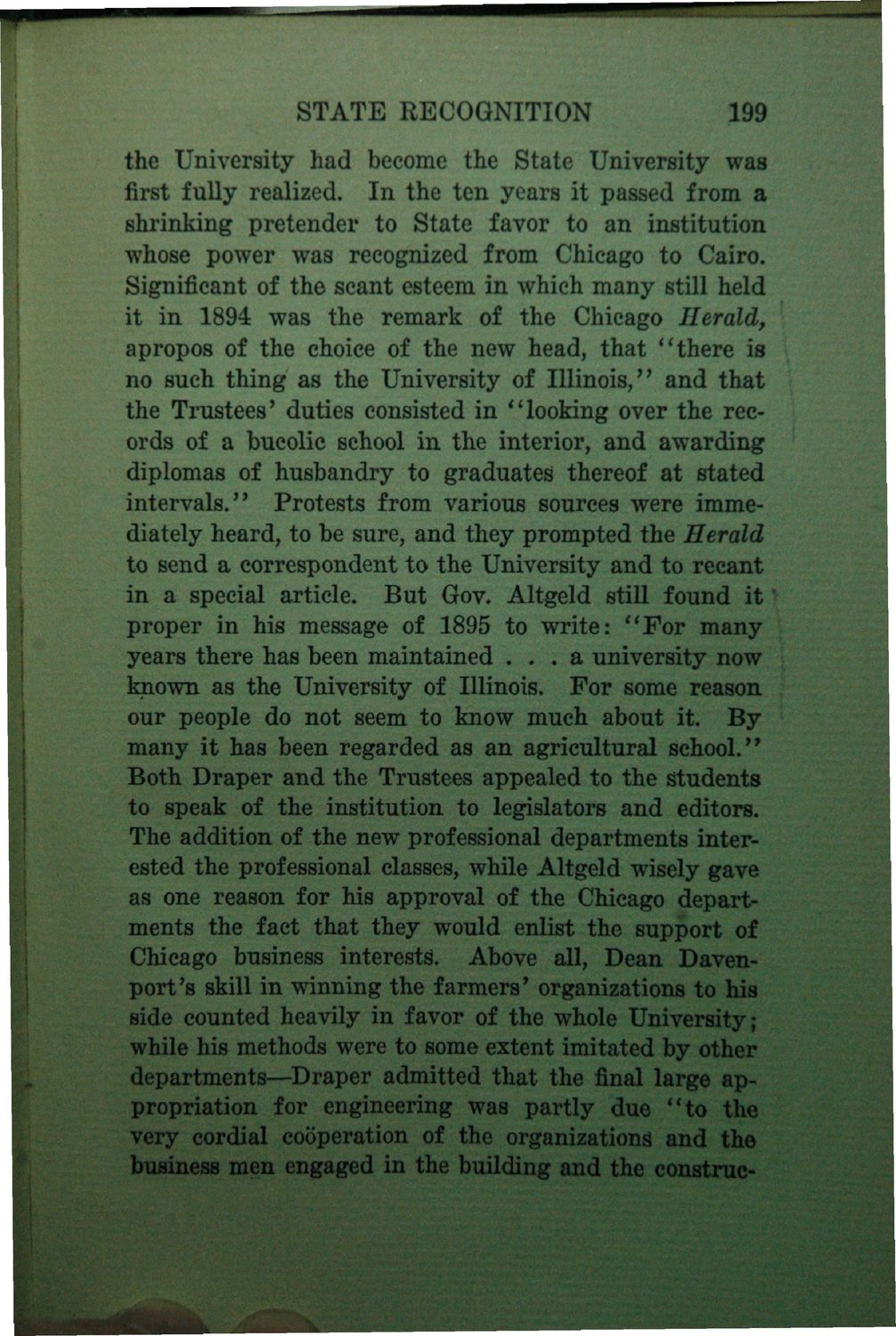| |
| |
Caption: Book - History of the University (Nevins)
This is a reduced-resolution page image for fast online browsing.

EXTRACTED TEXT FROM PAGE:
STATE RECOGNITION 199 the University had become the State University was first folly realized. In the ten years it passed from a shrinking pretender to State favor to an institution whose power was recognized from Chicago to Cairo. Significant of the scant esteem in which many still held it in 1894 was the remark of the Chicago Herald, apropos of the choice of the new head, that "there is no such thing as the University of Illinois," and that the Trustees' duties consisted in "looking over the records of a bucolic school in the interior, and awarding diplomas of husbandry to graduates thereof at stated intervals.'' Protests from various sources were immediately heard, to be sure, and they prompted the Herald to send a correspondent to the University and to recant in a special article^ But Gov. Altgeld still found it proper in his message of 1895 to write: "For many years there has been maintained . . . a university now known as the University of Illinois, M For some reason our people do not seem to know much about it. By many it has been regarded as an agricultural school." Both Draper and the Trustees appealed to the students to speak of the institution to legislators and editors. The addition of the new professional departments interested the professional classes, while Altgeld wisely gave as one reason for his approval of the Chicago departments the fact that they would enlist the support of Chicago business interests. Above all, Dean Davenport's skill in winning the farmers' organizations to his ide counted heavily in favor of the whole University; hile his methods were to some extent imitated by other epartments—Draper admitted that the final large ajK ropriation for engineering was partly due "to the ery cordial cooperation of the organizations and the usiness men engaged in the building and the construe-
| |